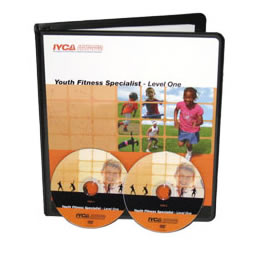By Dr. Kwame M. Brown
It would help to read the following article before reading this post, but I will try to summarize below.
http://www.timesonline.co.uk/tol/life_and_style/health/features/article1689463.ece
The title of the article: “Is PE a waste of time?”, by Barbara Lantin of the Sunday Times. Yet another provocative title. I guess that’s useful, but the problem is that most do not read through articles like this. I do. So, I am going to first communicate that this title is not supported at ALL by the contents.
The gist here is the author and others grossly misinterpreting some longitudinal research done in the EarlyBird Diabetes Study in England.
The purpose of the study was to look at potential causal factors in the development of Type II (obese) diabetes. They studied overall activity levels of kids, and observed that no matter the activity level offered kids, they chose their own activity level (opting out or in) and effort level.
The researchers concluded from this that activity level must be genetically predetermined by some “activitystat” gene.
[dna]Nice hypothesis, but there is one major problem with this conclusion:
Genes are old. The problems with rampant childhood obesity are relatively new. Therefore, we must consider… Gene expression itself is heavily determined / influenced by environment.
I am certain that such a genetically influenced trend like an “activitystat” exists.
To attribute it as the sole cause of many kids getting little to no exercise and kids fitness non existent at all is a fallacy.
They make some really strong conclusions on their website (while fighting for what is reportedly an unlikely funding renewal):
http://www.earlybirddiabetes.org/findings.php
Unfortunately, they make definitive statements like:
“Children’s activity not determined by environmental opportunity Green spaces and sports centres do not influence the physical activity of children Like most things biological, a child’s activity level seems to be ‘set’ by the brain, and therefore strongly defended against change”
What they are missing: No matter what exists in the environment – children don’t have cars. If the parent does not bring, the child does not go! Anyone who works with children every day would know this. So to look just at the presence of green spaces and centres “around” where the child lives is an insufficient parameter.
The author fails in the article “Is PE a waste of time” and the researchers fail in the findings section of their own website to recognize the interaction of availability of play spaces in the neighborhood with the will of the parent, despite saying right above…
“Obese children – parents unaware and unconcerned. Today’s parents are oblivious of their children’s weight. Parents are key partners in the drive to halt obesity, but will have little impact unless educated to recognize the problem”
So, let me get this straight: You are making the conclusion that low activity is genetically predetermined and highly resistant to change, but recognize parental education as a major factor? How can both be true? C’mon SON!!!
Now, I will turn my attention to the title “Is PE a waste of time”. Clearly not, if well designed, by their own admission, because also in the findings section of the EarlyBird website is the following:
Children who keep active are no lighter, but they are metabolically healthier: The UK and US Governments advise at least 60 minutes moderate physical activity every day.
Only 42% of the EarlyBird boys and 11% of the girls met this guideline consistently over the three-year period from 5-8yr. Importantly (because governments use BMI as their outcome measure), there were no differences in the trend for BMI over the four time points in either sex, but the more active children became metabolically healthier.
The study questions the utility of BMI as the outcome measure of physical activity programmes in children and also whether the bar for girls should be lowered (girls systematically record less physical activity than boys). (Metcalf BS – Arch Dis Child 2008).
Look at the last statement above – BMI has been consistently used as a parameter for years in studies on childhood obesity / inactivity. This is why the article and many others are missing the point. This is not about weight. It is about the habits that CREATE the higher weight in some kids, but adversely AFFECT ALL CHILDREN.
In conclusion:
Despite my bashing this study, it provides some really valuable information on kids fitness. Pretty well designed and executed (it seems), the EarlyBird study helps us delve deeper in to the causal factors in childhood obesity/inactivity.
My quarrel is with the conclusions made by some of the researchers, and with the result that this will have in creating a certain appearance to the layperson. As an aside, I never use the term layperson in an insulting way. I know very little about solar panel engineering, so I am a layperson. It has nothing to do with intelligence level, just amount and intensity of study
Is PE a waste of time? If you only care about what children weigh when left to their own devices, yes. But yet again, I feel compelled to say as I often have – obesity is the sneeze.
Physical play, when done with children’s needs (and yes, wants) in mind, treats the disease of inactivity and lack of physical enjoyment. PE that concentrates on caloric expenditure and measuring BMI treats the symptom. This placates politicians and statisticians, but does very little for children.
Children need thoughtful play time and play spaces dedicated to and designed for their natural proclivities. They also need time playing with adults. Furthermore, adults need to be proactive in providing healthy foods to support the play.
Help End The Madness!
Click Here Right Now to Become a certified Youth Fitness Specialist Right Now and Contribute to the Solution of Youth Inactivity:
